Although I was in a hurry to get to the farmers market two Saturdays ago, I had to pull off the bike trail to get a closer look at the bright yellow flowers near the bank of Walnut Creek. They turned out to be Lanceleaf coreopsis (Coreopsis lanceolata), a new find for me. Sometimes known as sand coreopsis or lanceleaf tickseed, this species is native to most of the U.S. and Canada. UPDATE: Bleeding Heartland user Prairie Fan notes in the comments that The Vascular Plants of Iowa, a classic text by Lawrence Eilers and Dean Roosa, identifies lanceleaf coreopsis as a native of the U.S. but not Iowa.
Like other members of the aster family, what looks like one flower is a group of ray flowers (which resemble petals) surrounding a center disc containing many tiny flowers. The ragged tips of the ray flowers set lanceleaf coreopsis apart from most other related species, except for large-flowered coreopsis. I’m grateful to ecological consultant and photographer Leland Searles, who looked at my pictures and confirmed the ID as lanceolata plants, based on the leaves.
Wendie Schneider took the picture at the top of this post in Story County, along with a few other photographs below. The rest of the images are my shots of the colony near the Walnut Creek trail, close to the border between Des Moines and Windsor Heights.
The Illinois Wildflowers website is a good resource for botanically accurate information about this plant’s foliage, flowerheads, and seeds. According to the U.S. Department of Agriculture’s Forest Service,
Lanceleaf coreopsis has been a long time favorite of both beginning and advanced gardeners. It is easily propagated from seed and as is typical of many native wildflowers, it is often not until the second year when numerous blooms are formed. This wildflower prefers full sun and does best in well-drained soil. Its self-seeding nature makes it a perfect candidate for prairie, meadow, and native wildflower plantings. When conditions are right it will grow into large colonies and produce showy yellow flower carpets. As long as the seed heads are removed it will also do well growing in a border. Lanceleaf coreopsis is a very dependable and prolific flowering native perennial. It has few problems with insects or disease and will thrive in conditions of high heat, drought and humidity.
Here’s the scene that drew me in:
Another view of the setting:
A group of budding lanceleaf coreopsis:
The base leaves blend in with other plants:
The next four shots are all Wendie Schneider’s work:
Back to Walnut Creek in Polk County. The flowerhead on the upper left is past its prime:
Near the center, fruit is starting to form on one lanceleaf coreopsis plant.
The tiny yellow flowers are a non-native clover, which is prevalent across Iowa.
Lanceleaf coreopsis hiding behind other plants on the riverbank:
Fruit forming on a plant that has finished blooming:

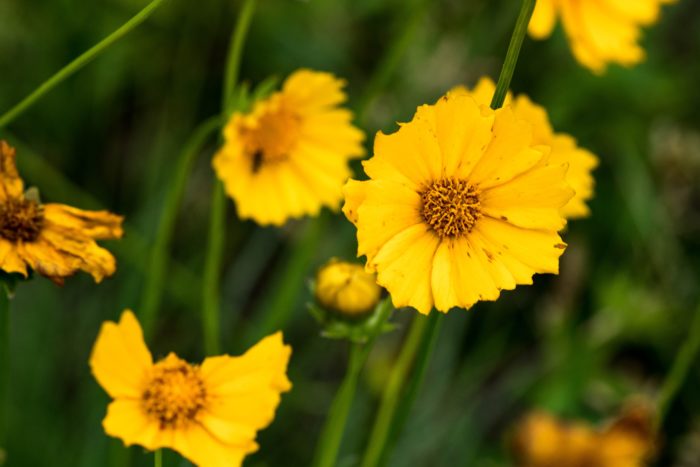
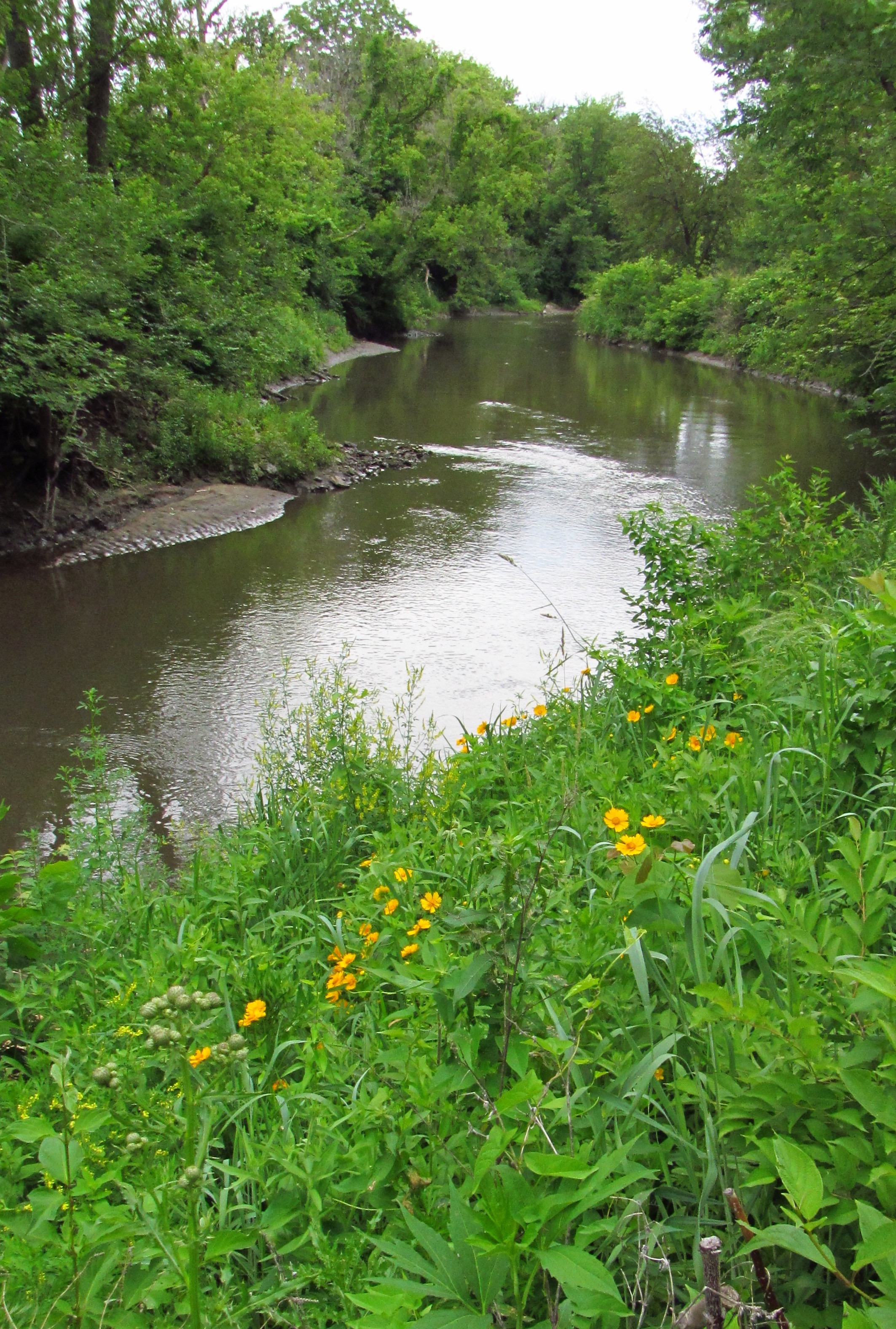
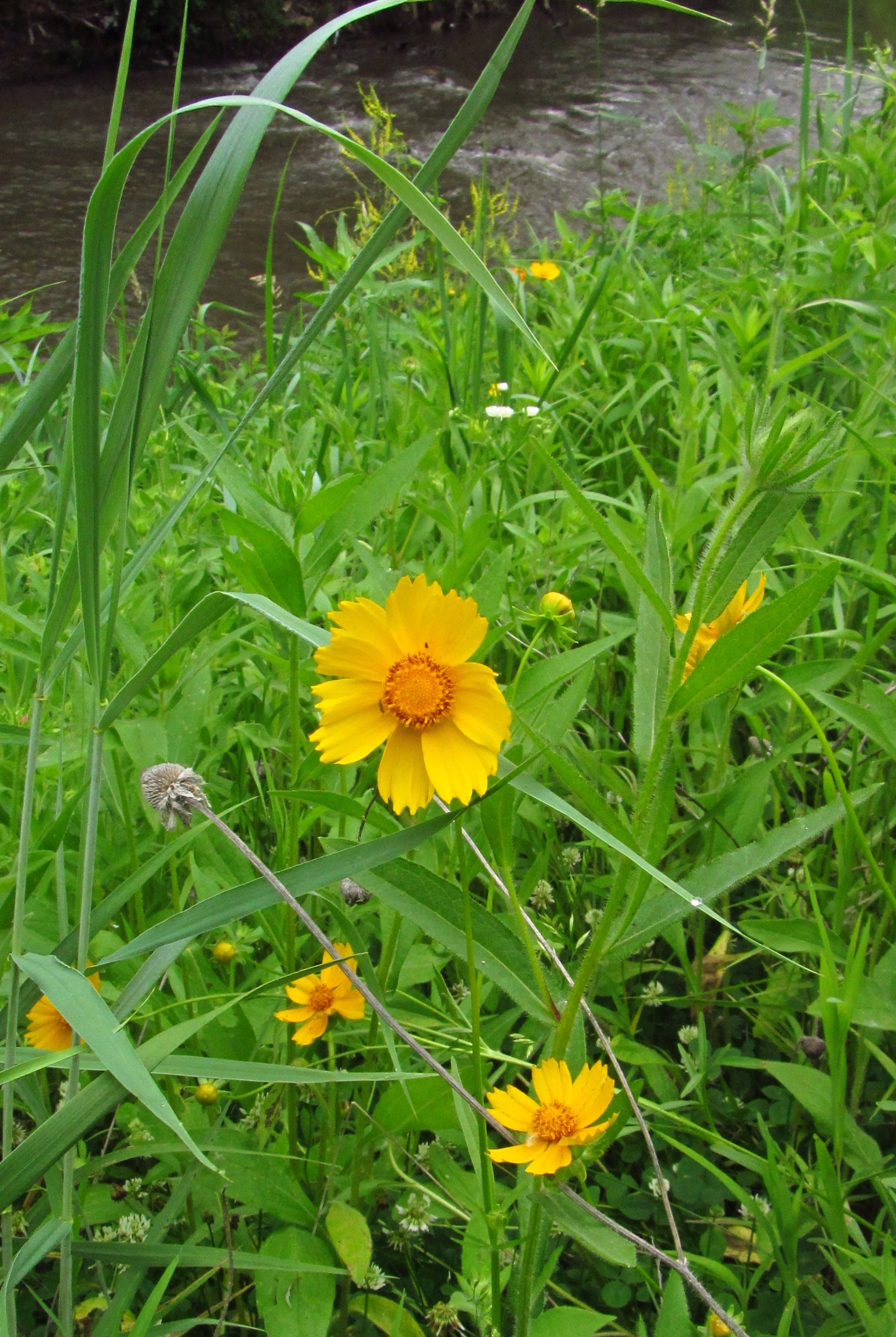
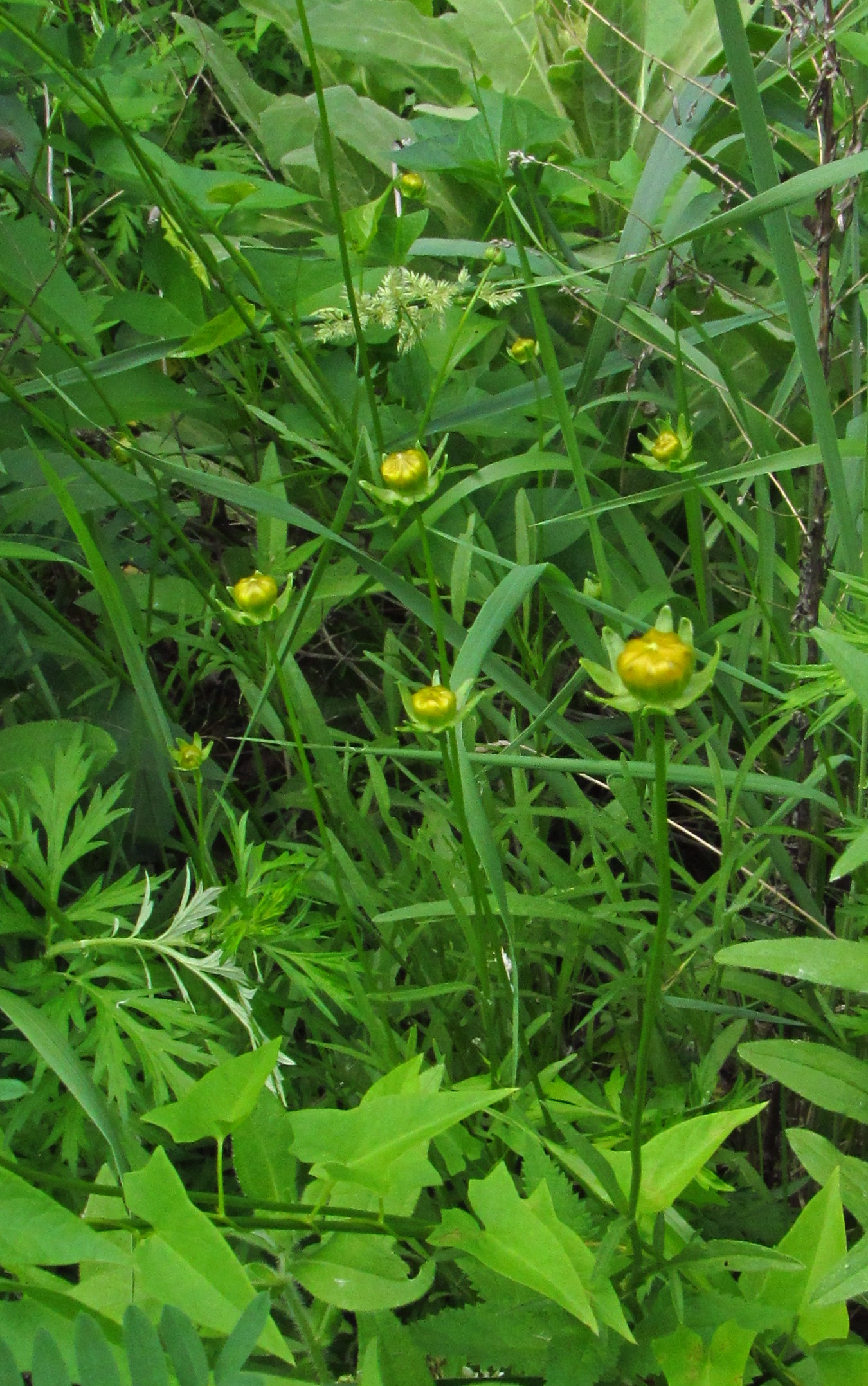
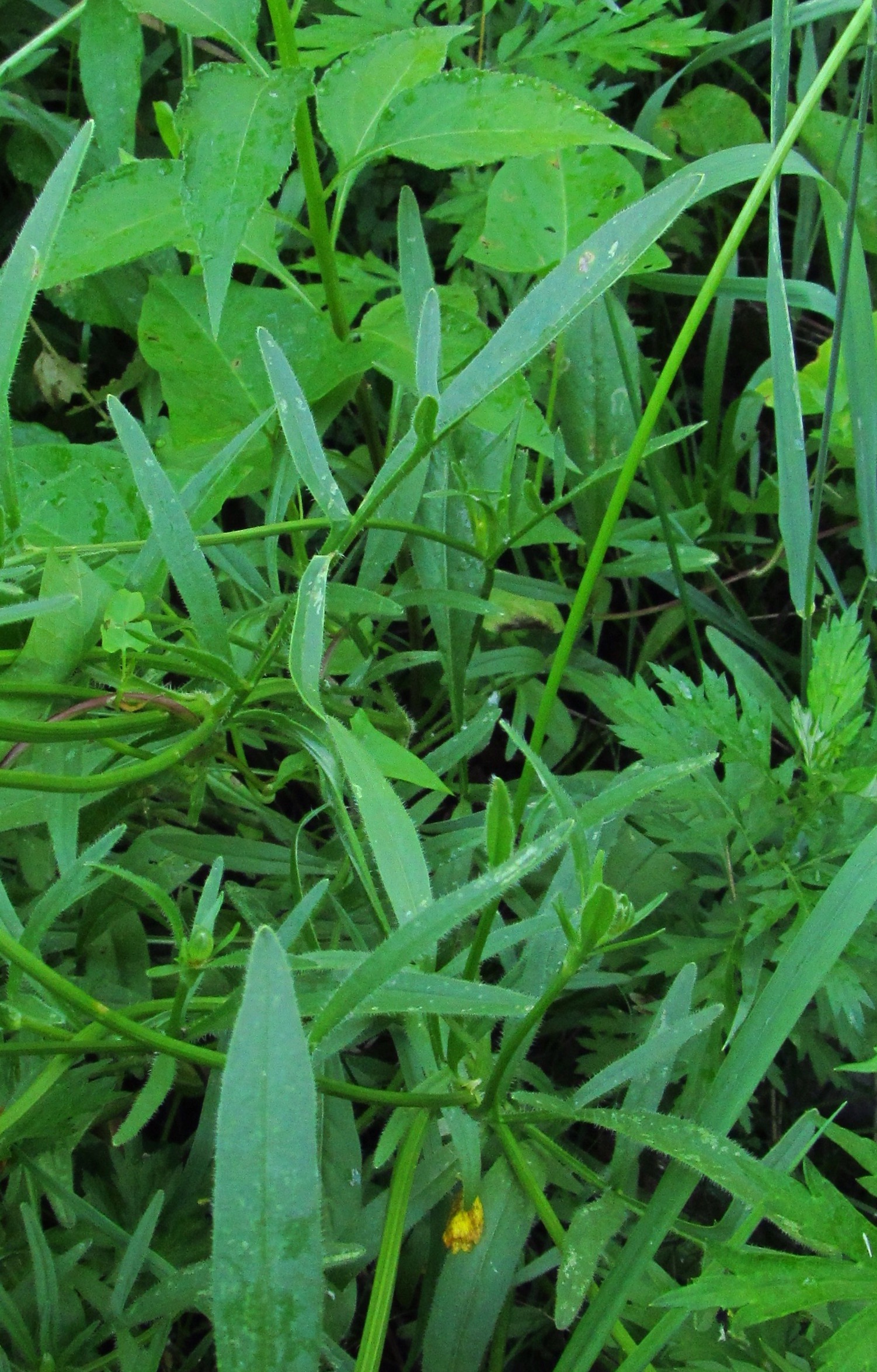
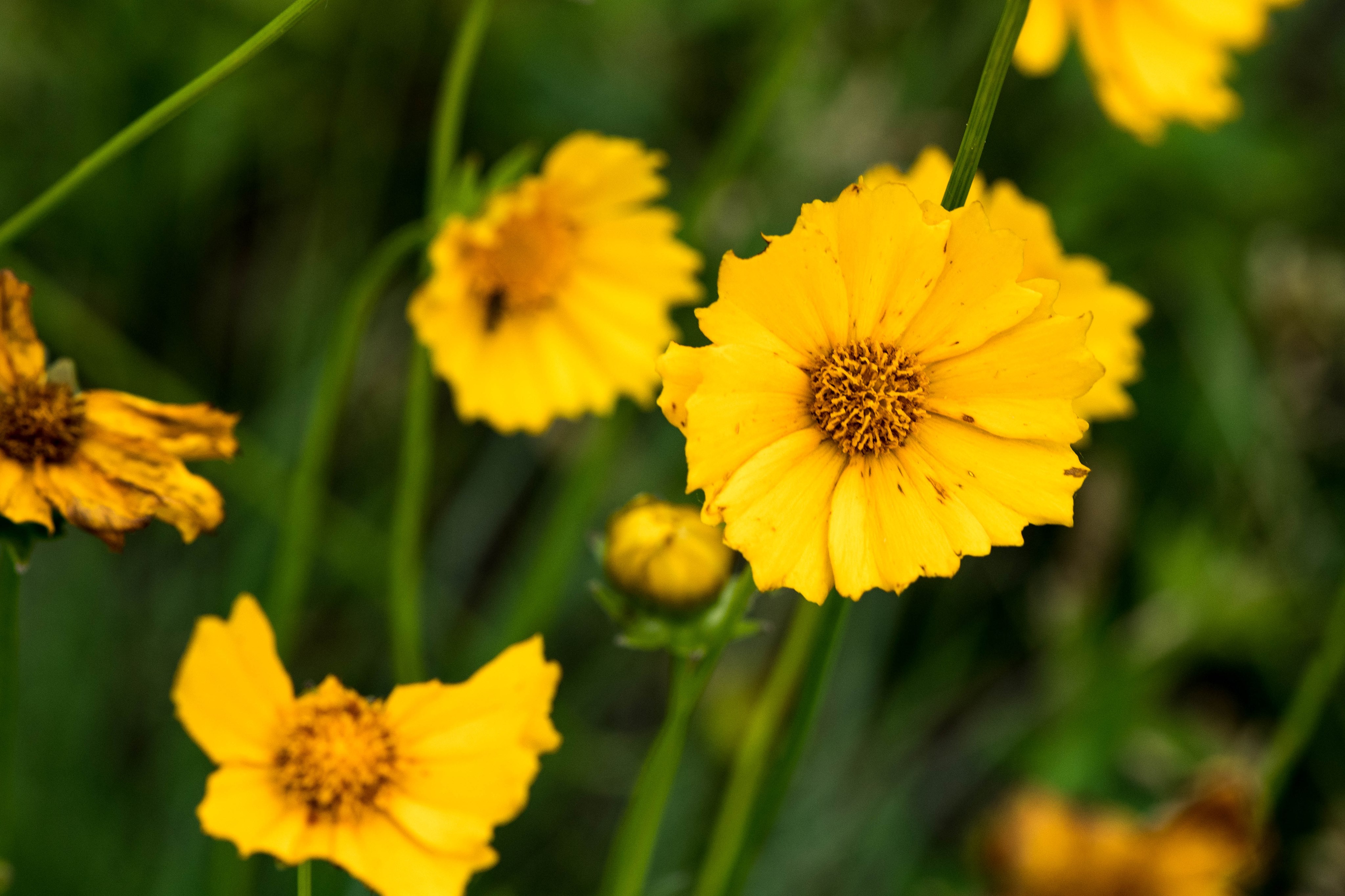
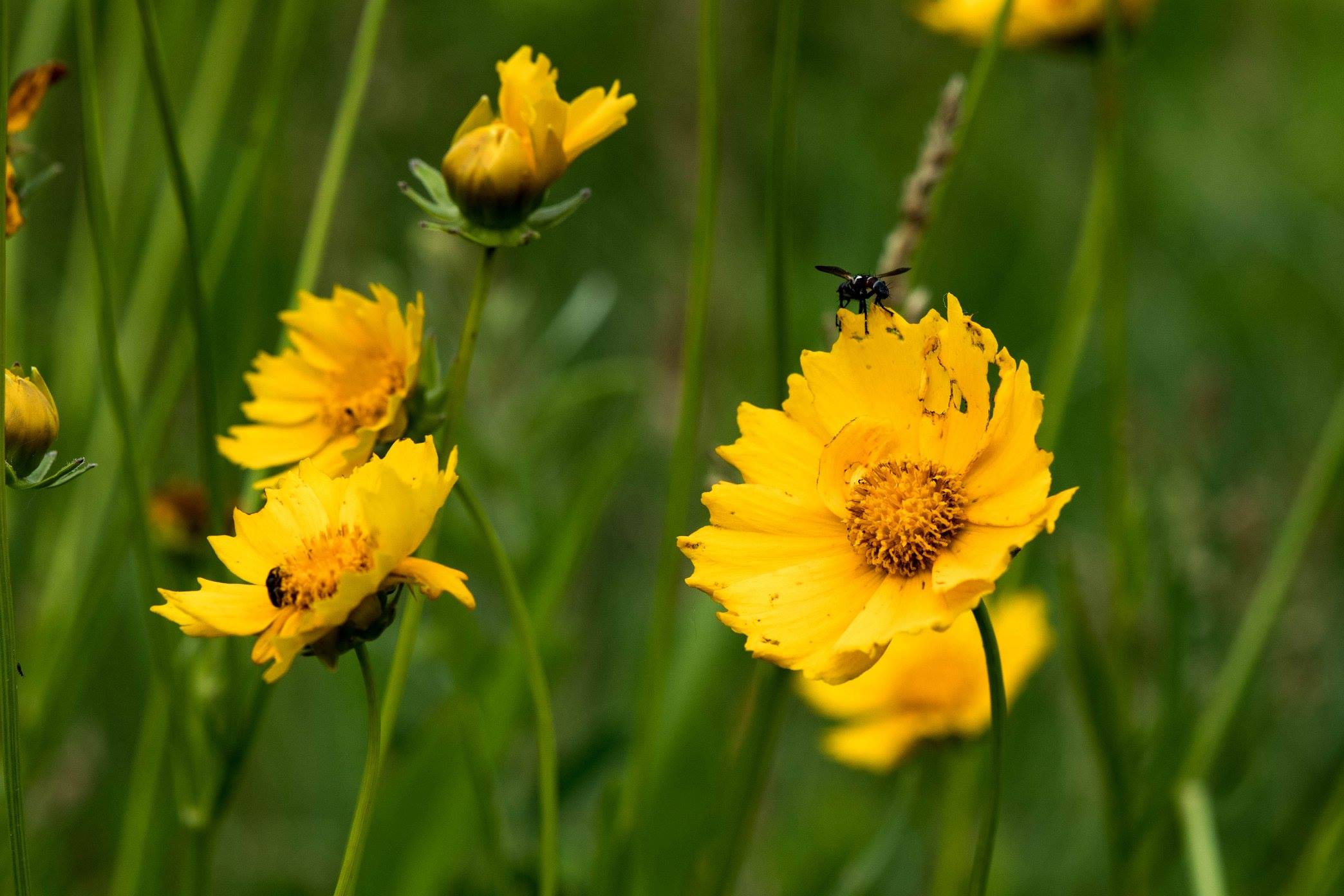
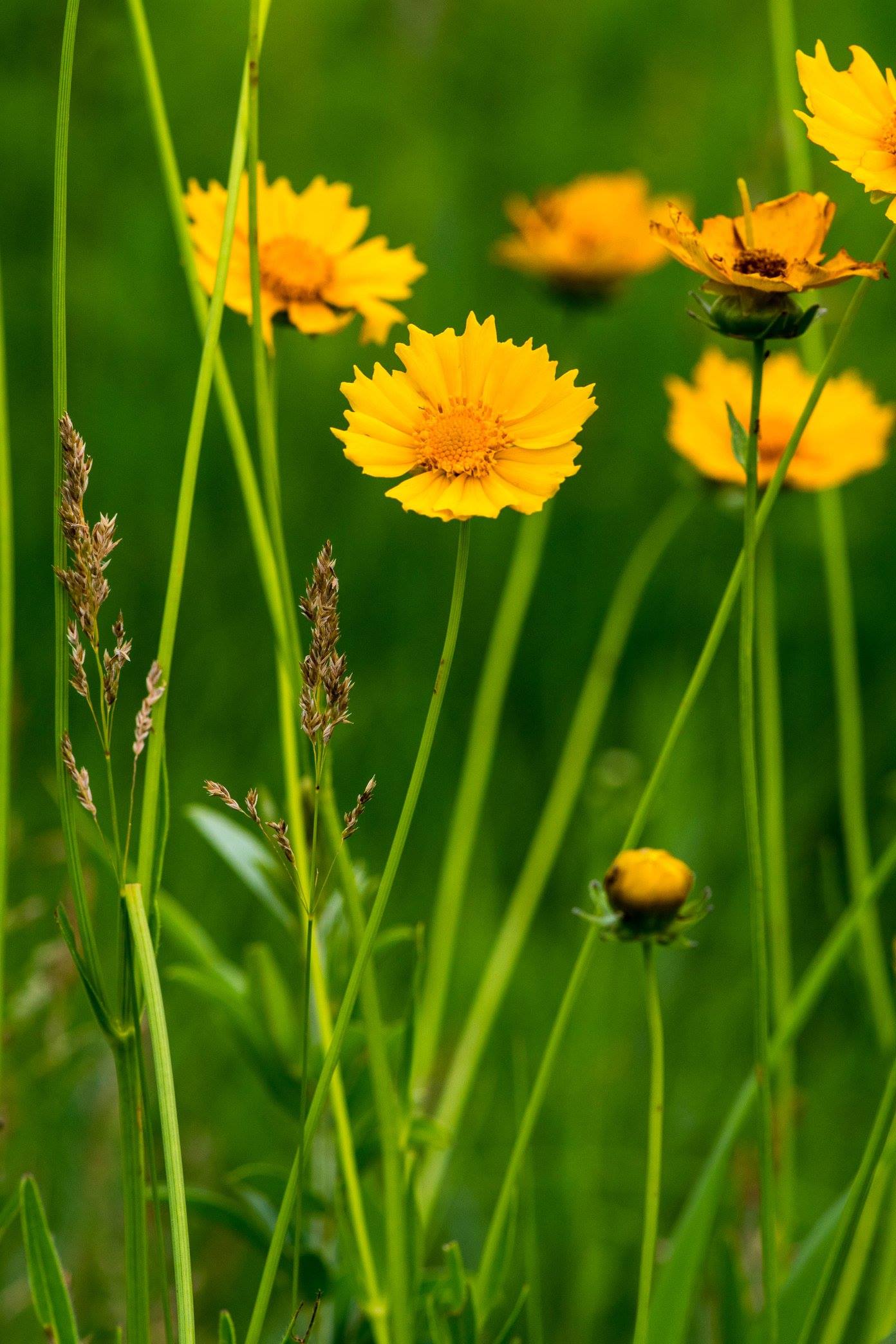
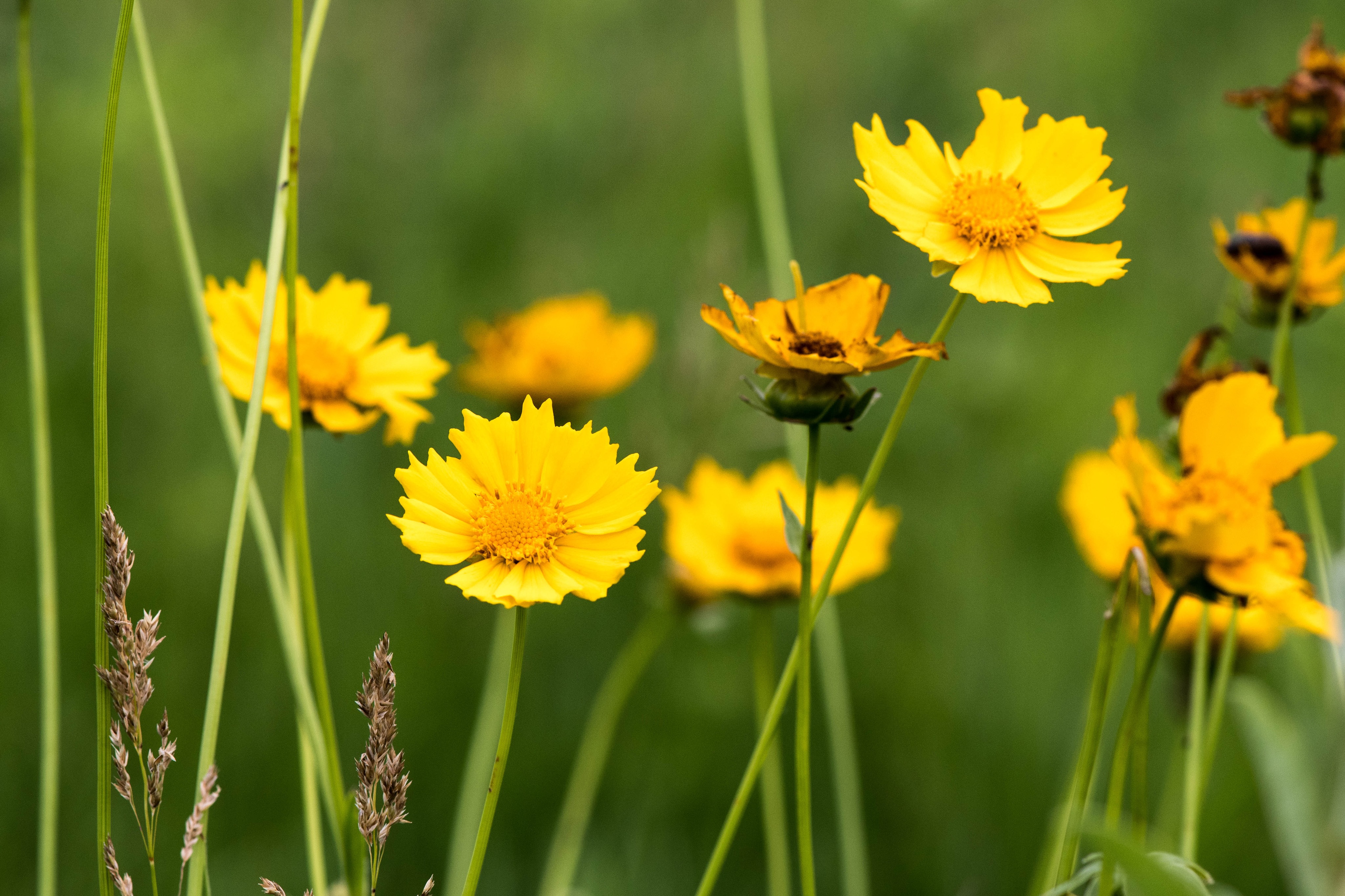
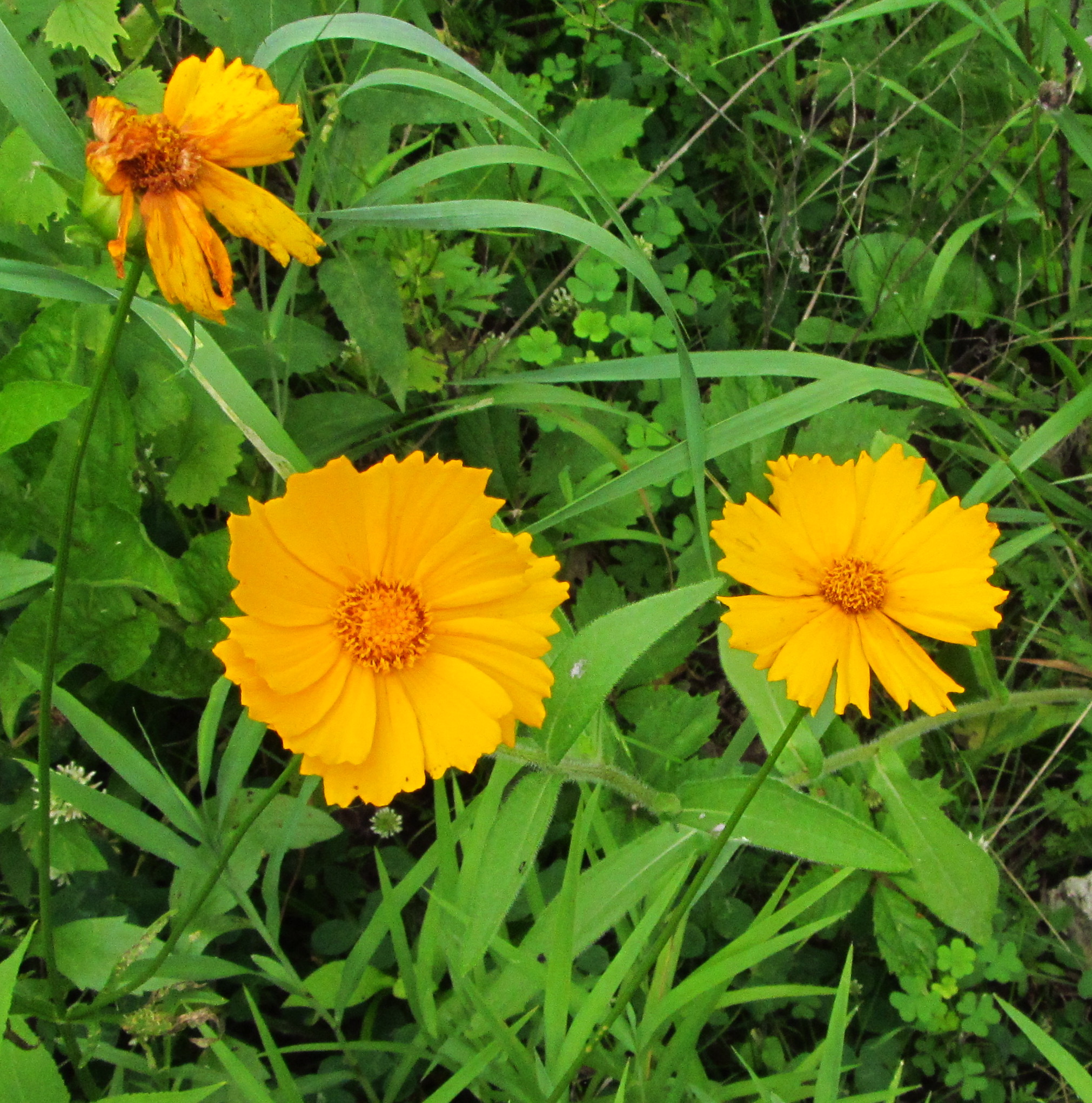
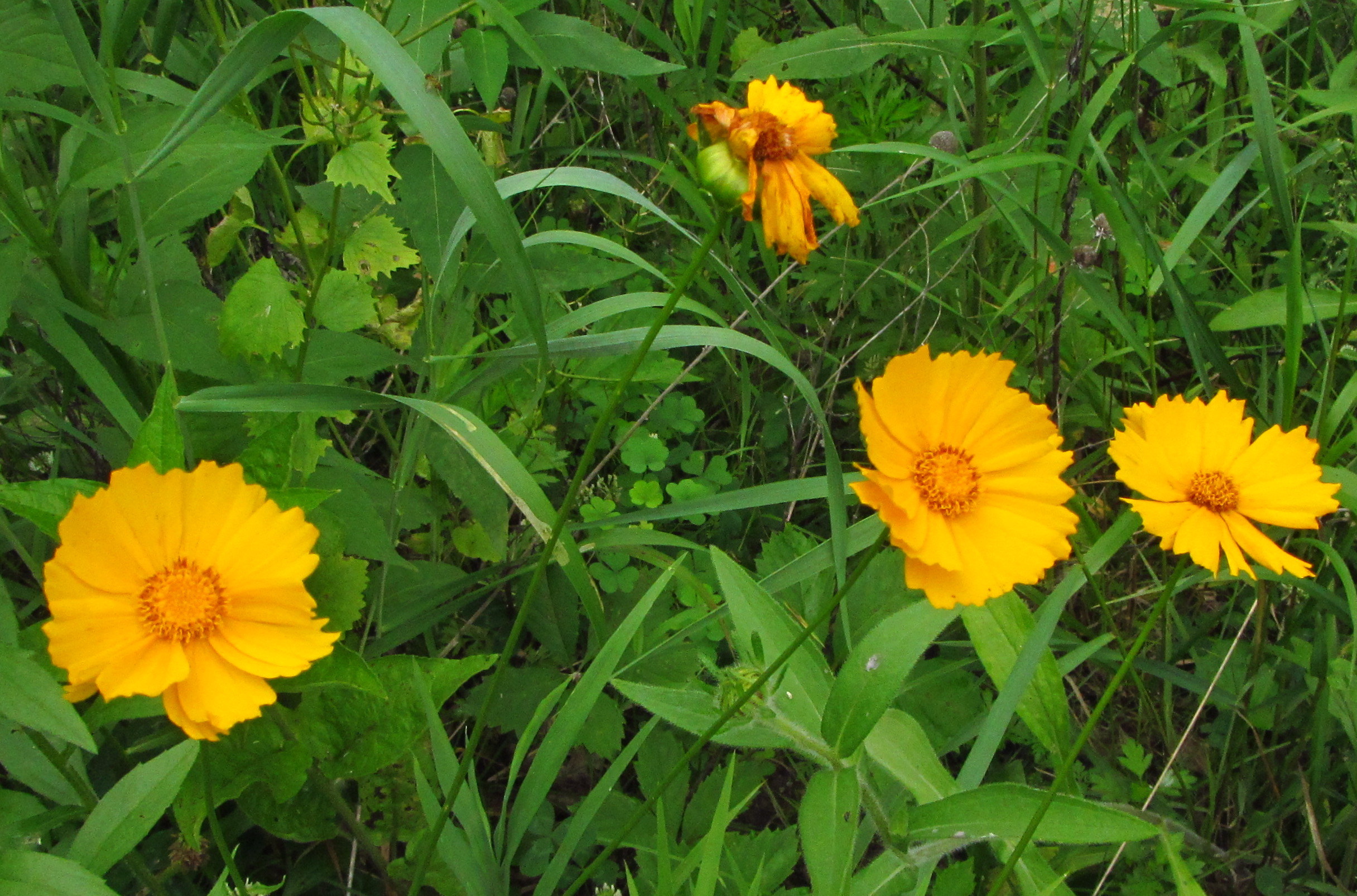
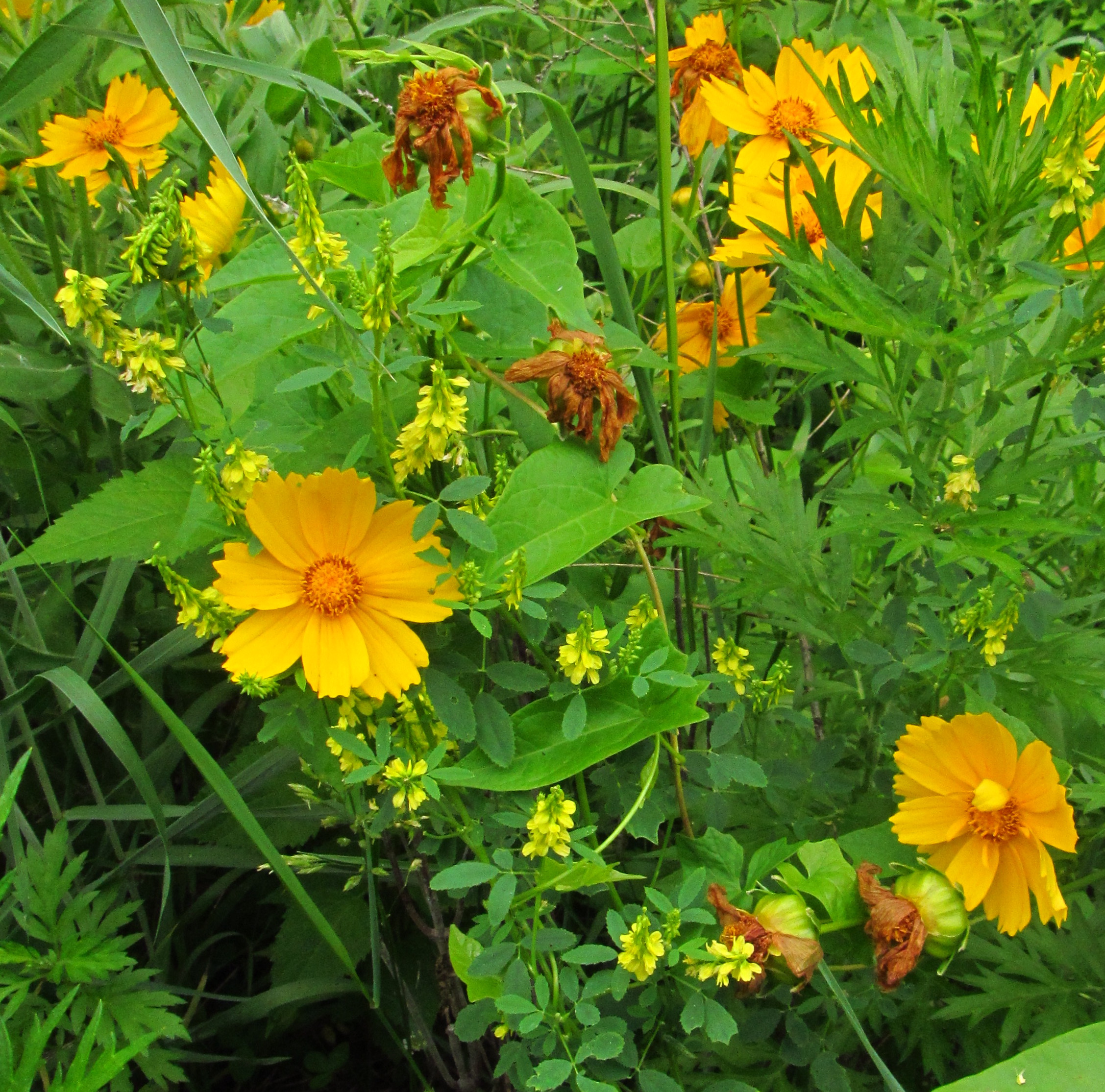
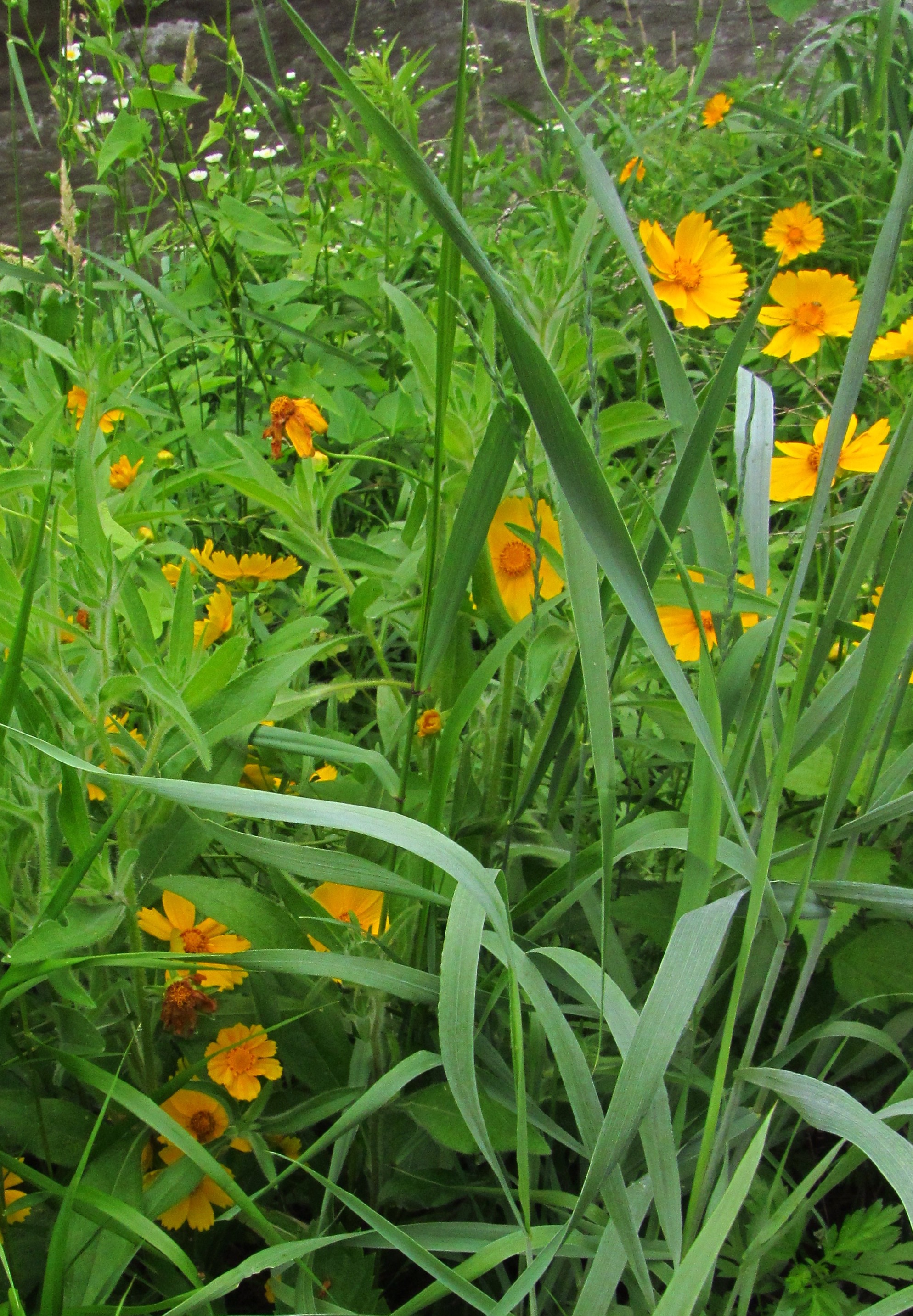
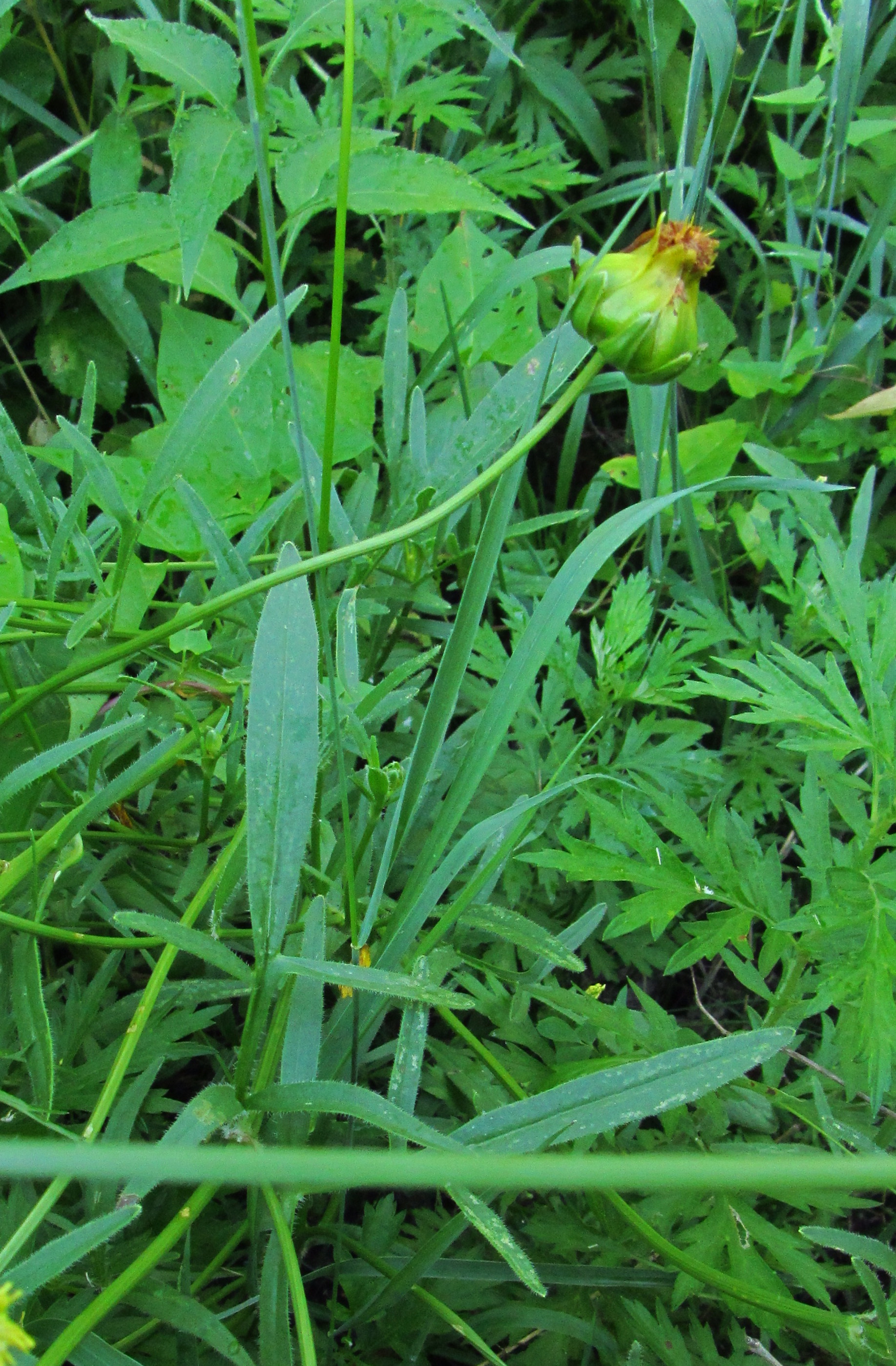
3 Comments
Hmm, this is interesting
I looked at the linked NRCS range map and it shows lanceleaf coreopsis as being native to Iowa. However, I’ve never seen lanceleaf coreopsis in a Central Iowa prairie remnant (not that I’ve seen every remnant in Central Iowa or elsewhere by a long shot).
So I checked THE VASCULAR PLANTS OF IOWA by Eilers and Roosa, a classic source of Iowa plant-range information. That book says that lanceleaf coreopsis is a native of the U.S. but not a native of Iowa. However, it also says that lanceleaf coreopsis is “rare in southeast Iowa.” Sometimes that happens when the seeds of a plant species have been brought into Iowa via gardening, hay from out of state, livestock poop, accidental seed in seed mixes, etc.
I respect the growing knowledge of the NRCS regarding Iowa native plants. However, Eilers and Roosa were Iowa native-plant experts way back when native plants weren’t cool:-), so when there is confusion, I tend to believe Eilers and Roosa. If there is good documented evidence that lanceleaf coreopsis is in fact native to Iowa, that would be very interesting to know.
When I started amateur botanizing in Iowa forty years ago, there were few prairie plantings that had a diversity of flowers. Most plantings were almost entirely made up of native warm-season grasses.
Now there are many plantings with flowers. Some of those plantings include flower species that are not native to the counties where they are planted. Other plantings contain flowers that are native to where they are planted, but the genetic origins of the seed used in the planting might be far from Iowa, sometimes as far as Montana or Pennsylvania. The plants from those distant seeds don’t necessarily behave just like native Iowa populations of the same species in terms of bloom time, relative aggressiveness, etc.
What these changes might mean in the long run, ecologically, is not clear and is the subject of some debate. It is certainly making amateur botanizing a little more challenging than it used to be.
PrairieFan Thu 21 Jun 2:14 AM
that's interesting
In the location where I found this colony, the lanceleaf. coreopsis certainly could have escaped from someone’s garden. Walnut Creek runs through a heavily populated area.
desmoinesdem Thu 21 Jun 8:42 AM
That makes a lot of sense...
…and of course as this post points out, lanceleaf coreopsis is a beautiful flower loved by many gardeners. By coincidence, a new copy of MISSOURI PRAIRIE JOURNAL arrived today and the cover is a closeup of bright coreopsis blossoms. I thought they were lanceleaf coreopsis, but the cover says they are big-flowered coreopsis (Coreopsis grandiflora) which sure looks similar.
PrairieFan Thu 21 Jun 3:48 PM